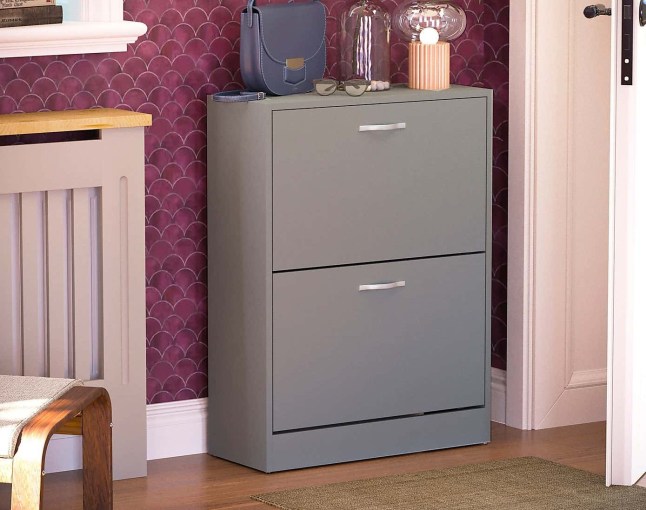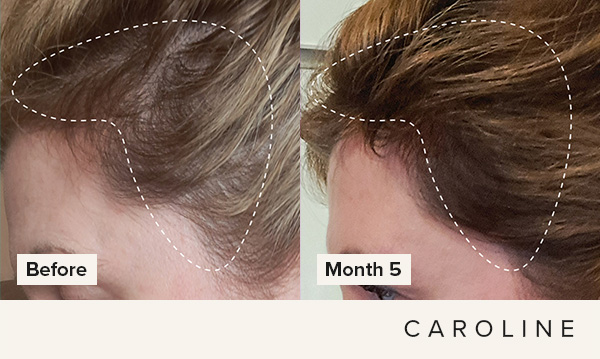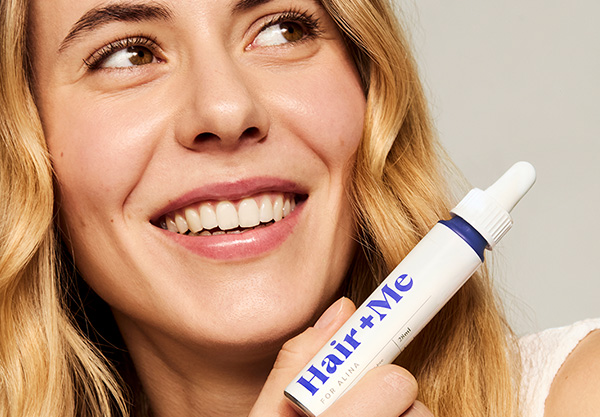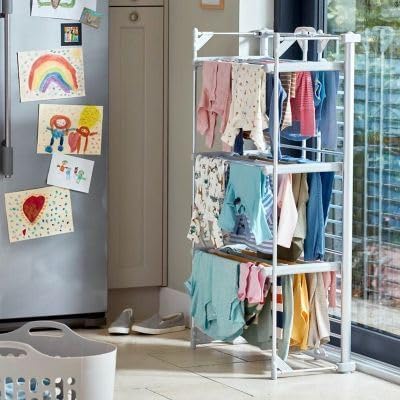19 Nov, 2025 | Admin | No Comments
Heard of Dunelm’s secret Returns Outlet? Score perfect products at major discounts

Metro journalists select and curate the products that feature on our site. If you make a purchase via links on this page we will earn commission – learn more
If your home space is looking a little bleak, we’ve found the perfect hack for upgrading your spaces on a budget.
Dunelm has always been known as the destination to snap up affordable homeware and furniture picks, but did you know it had a little-known Returns Outlet that allowed you to snap things up for even less?
It’s like a homeware treasure trove. Amazing pieces in perfect condition at reduced prices. Be still our beating Pinterest boards.
Whether you’re on the hunt for furniture, lighting or even a brand-new mattress, you’ll find it all and more in the Dunelm outlet – and with an excellent price cut.
Take this Esme Woven Folkstone Stripe Occasional Chair, down from £299 to £269.10.
We love the contrast of the cream against the deep mulberry tones, and the upholstered back and seat are ideal for unwinding after a busy day. Just grab a glass of something special, pop something good on the telly and relax.
Ready to start your homebuying journey?
You can access completely fee-free mortgage advice with London & Country (L&C) Mortgages, a partner of Metro. Customers benefit from:
– Award winning service from the UK’s leading mortgage broker
– Expert advisors on hand 7 days a week
– Access to 1000s of mortgage deals from across the market
Unlike many mortgage brokers, L&C won’t charge you a fee for their advice.
Find out how much you could borrow online
Mortgage service provided by London & Country Mortgages (L&C), which is authorised and regulated by the Financial Conduct Authority (registered number: 143002). The FCA does not regulate most Buy to Let mortgages. Your home or property may be repossessed if you do not keep up repayments on your mortgage.
Ready to kit out your home for less? Explore our top picks from the Dunelm Returns Outlet below.
Dunelm Returns Outlet – what to shop

Genoa Window Seat, Chenille
For a cozy spot to curl up and read or have an early morning cup of tea, the Genoa Chenille Window Seat is a great place for comfort. Covered in soft chenille fabric, this stylish window bench has an 88-litre lined storage compartment that’s perfect for storing reading material, throws and more.

Jay-Be 2000 Hybrid E Pocket Eco Trucore Mattress, Double
Upgrade your sleep with this Jay-Be 2000 Hybrid E Pocket Eco Trucore Mattress, yours with a £35.90 saving. This mattress features extra-fine micro e-Pocket™ springs that introduce a new dimension to responsiveness, working independently to delicately respond to even the gentlest of movements throughout the night.

Nardi Step Low Round Table with 2 Doga Relax Chairs
Stock up on garden essentials ahead of the new season with this Nardi Step Low Round Table with 2 Doga Relax Chairs, yours with 10% off. The table features a perforated top and weighted pedestal with three spoke legs for added stability, while the chairs boast a slatted Italian design for relaxing comfort.
Understandably, stocks are pretty low so, if you see something you like, snap it up now before it’s too late. You don’t wanna be left like old Bev Knight, always saying ‘shoulda, woulda, coulda’.
Follow Metro across our social channels, on Facebook, Twitter and Instagram
Share your views in the comments below
19 Nov, 2025 | Admin | No Comments
Queen Camilla’s faux pas with Princess Eugenie’s £10m bridal tiara caught on camera

Queen Camilla wore the emerald tiara Princess Eugenie donned for her wedding to Jack Brooksbank in 2018 – but with one subtle difference
19 Nov, 2025 | Admin | No Comments
AI for your knickers: The new sanitary pad tracking clot size and flow


While early forms of period products involved things like homemade cloths, today there’s an array of fixes that cavewomen and Victorian ladies would’ve marvelled at, from period pants to moon cups.
Now, though, women have been offered a new solution: the AI sanitary pad.
Joii is the world’s first AI-powered menstrual health app, which, when used alongside a specially designed sanitary pad, can measure ‘blood volume and clot size with clinical precision.’
The idea is that, armed with information, anyone who has a period will be able to work out what’s ‘normal’ for them, and notice changes in their period that could indicate wider health issues.
But in a world that’s increasingly sceptical of AI, from concerns about how it’s shaping the job market to the impact it’s having on our love lives, is using this technology a help or a hindrance for women’s health?
How does the AI sanitary pad work to track periods?
Joii is a product that, as founder Justyna Strzeszynska tells Metro, is for ‘anyone who menstruates.’ In particular, this includes younger people who aren’t so used to bleeding every month, and might want to ‘establish their own baseline’ in order to monitor changes in their cycle over time.
She also says the app is to help people who are experiencing symptoms and want ‘clearer information to support conversations with clinicians,’ as well as those who ‘simply want objective insight’.
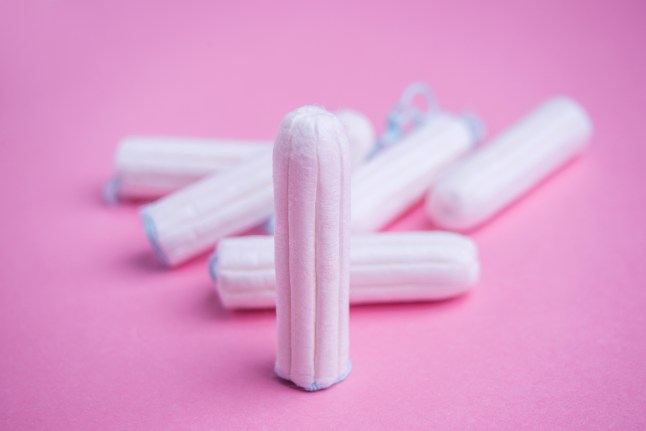
Justyna says: ‘Most of us are taught to self-assess our bleeding as light, medium, or heavy, without any real reference point. Joii provides measurement rather than estimation.’
She created the app after her own difficult journey towards getting a fibroids diagnosis, which left her anaemic. She says medics would ask her about her flow, but she had no benchmark from which to measure it.
She explains: ‘Measuring blood loss is simply the next step to better understanding our bodies and demanding the care we deserve. We want every woman to have proof, not just pain.’
So, how does it all work? Joii uses AI technology, which is paired with specifically designed pads that claim to ‘instantly measure blood volume and clot size with clinical precision.’
Before putting a pad on, users will need to scan it using their phone, registering it on the app and giving it permission to track blood loss.
Much like other period tracking apps, Joii also gives users the option to track wider period symptoms and rank them based on their severity, including pelvic pain, pain during sex, brain fog, and fatigue.
What does the app flag as ‘abnormal’?
There’s no benchmark that the app would consider ‘abnormal,’ but it does use clinically approved guidance from both the International Federation of Gynaecology and Obstetrics and the National Institute for Health and Care Excellence (NICE).
These guidelines state that:
- Losing between 10 and 80ml of blood during a period is the expected range
- Any flow that consistently measures about 80ml meets the clinical definition of ‘heavy menstrual bleeding’
- Any flow that’s particularly light or shorter than anticipated can also occur in particular hormonal or medical circumstances, but Justyna notes that Joii doesn’t make ‘assumptions’ about why this might be.
‘Basic body awareness is just as powerful’
But in a world where we already track our steps, sleep and screen time, do we also really need to know the exact volume of blood produced during our periods?
Specialist pelvic health physiotherapist Tiffany Sequeira tells Metro, that measuring blood loss more objectively will likely prove helpful — mainly because terms like ‘heavy’ and ‘light’ can be so subjective.
She says: ‘Heavy menstrual bleeding is defined as around 80ml or more, but most women have no way of knowing where they fall.’
Tiffany says that while clots can tell us a lot, using descriptions like ‘huge’ or ‘tiny’ can, again, be open to interpretation. Clinically, she says that specialists will typically show concern when clots are ‘around the size of a 10p coin,’ or if someone is passing them relatively often.
‘That’s when it becomes more suggestive of heavy menstrual bleeding. If an app can consistently capture clot size and frequency over several cycles, that can give us clearer context, especially in cases of heavy bleeding, fibroids, adenomyosis or suspected endometriosis,’ she notes.
However, Ashfaq Khan, a consultant obstetrician and Harley Street gynaecologist, believes that regularly measuring period bleeding is ‘generally not helpful’ for the average woman — that is, unless it’s undertaken by someone with particularly heavy periods or someone with anaemia, which can cause irregular periods.

When it comes to the coin rule, Ashfaq believes that clots can easily be assessed visually by comparing the two in size without the need for AI intervention.
He tells Metro: ‘Such tools are unlikely to add meaningful value, as they would essentially be measuring the diameter, which can already be done by simple observation.’
He also cites the importance of using a good-quality sanitary pad, one that’s hypoallergenic, biodegradable, and made from safe materials.
With such AI-powered apps, he worries that ‘women may end up choosing an inferior-quality pad simply for the purpose of measuring menstrual blood loss, which can be assessed in several other, more effective ways.’
In his view, it’s ‘not going to help diagnose anything other than menorrhagia (heavy periods) or oligomenorrhoea (irregular periods).’
Tiffany also doesn’t believe that a high-tech app is strictly necessary for women to be able to understand their flow, though it can certainly empower women with the data they might need to walk into medical appointments with confidence.
However, Tiffany adds that ultimately, ‘you’re the expert in your body’.
She says: ‘Taking a few extra seconds in the bathroom to notice how often you’re changing pads, tampons or a cup, and paying attention to symptoms like flooding or clots can help you spot changes early,’ she suggests.
‘Tools like this can be useful, but basic body awareness is just as powerful when it comes to recognising when something isn’t right.’
Do you have a story to share?
Get in touch by emailing MetroLifestyleTeam@Metro.co.uk.
19 Nov, 2025 | Admin | No Comments
Princess Kate’s ‘luxurious’ £3,750 tribute to Princess Charlotte we nearly missed
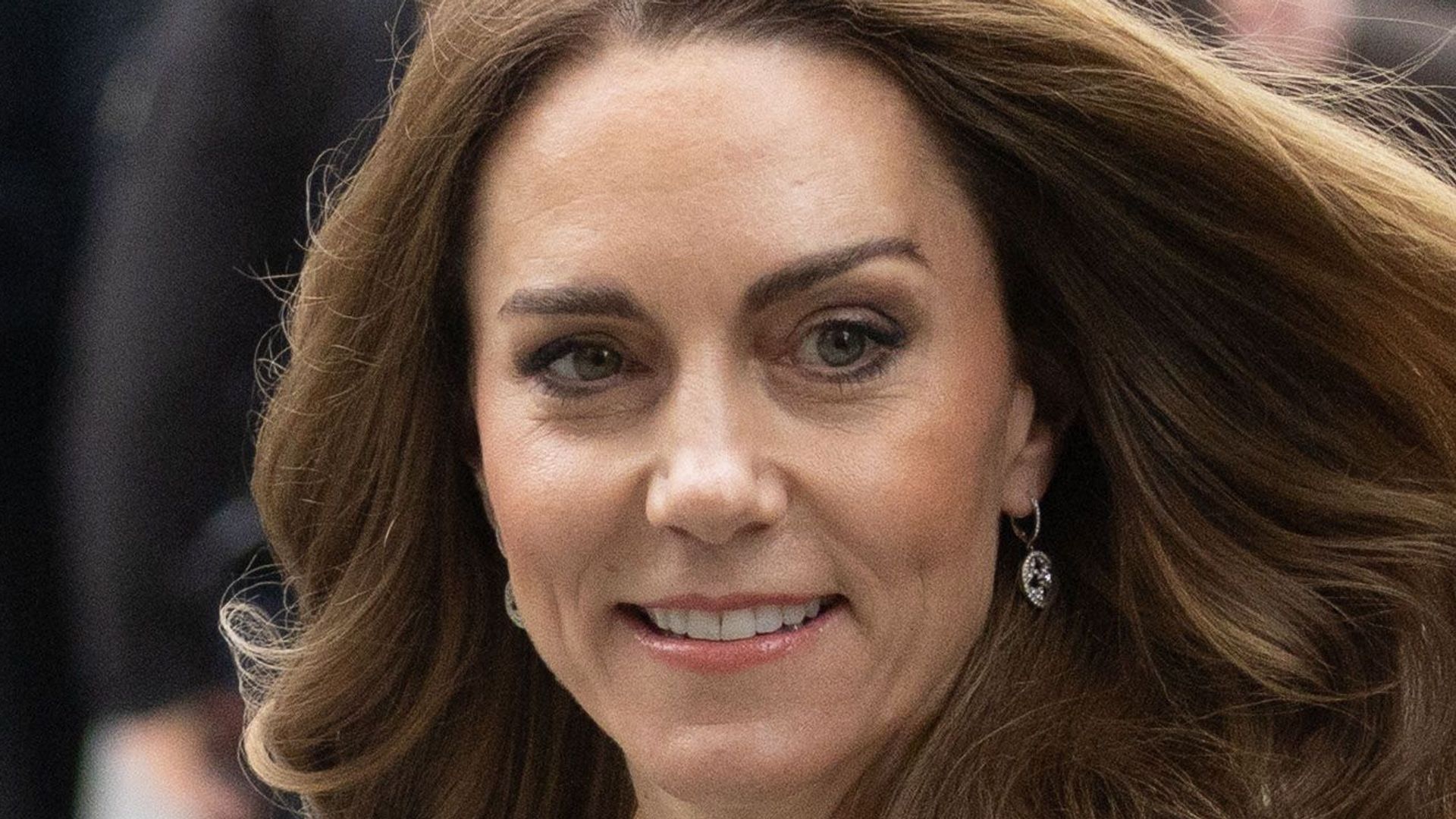
The Princess of Wales paid tribute to her daughter, Princess Charlotte, on 18 November as she attended The Future Workforce Summit at Salesforce Tower in London, wearing the earrings she donned to Charlotte’s christening in 2015.
19 Nov, 2025 | Admin | No Comments
The custom hair-growth solution that’s giving people thicker hair fast is now on sale
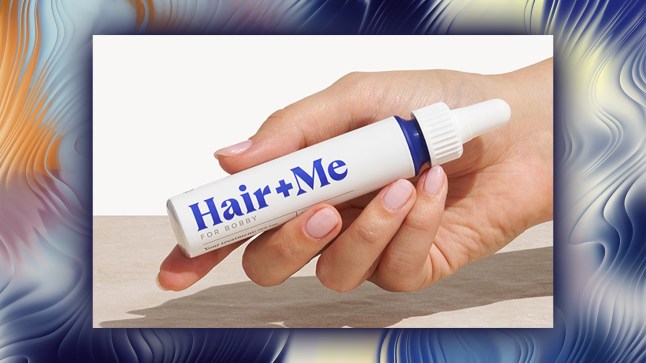
Metro journalists select and curate the products that feature on our site. If you make a purchase via links on this page we will earn commission – learn more
Some may be familiar with the beauty subscription service Skin + Me, who send out bespoke skincare solutions straight to your door.
Well, this personalised solution-based brand now has a haircare obsessed little sister –Hair + Me.
Designed for those after a solution to hair loss and thinning, Hair + Me is all about haircare solutions that work for you – no one-size-fits-all treatments here – and users have seen results in as few as three months.
A prescription service but not as you know it, Hair + Me formulas are created alongside expert medical professionals and dermatologists, and are bespoke to your hair needs, utilising ingredients that have been scientifically-proven to aid healthy hair growth.
The best bit? You can score three months of your personalised haircare treatment for just £14.99 per month with code HMETRO – a huge saving of 55%.

Hair + Me Subscription
If you're struggling with hair loss, fine hair or damaged locks, then Hair + Me’s prescription service can help find a solution. Simply complete the free online consultation, share details of your lifestyle, hair type and concern, which the in-house experts will use to create a personalised solution for you. Enter code 'HMETRO' at the checkout to claim the reduced price for three months.
Whether you’re battling with hair loss, notice your scalp is dry and flakey, or you simply want to give your hair a dose of hydration to get that glossy finish back, Hair + Me has a solution for it all.
And no, you don’t need to wait a month for a GP appointment to get your bespoke solution.
All you need to do is simply complete a free online consultation where you’ll be asked to describe your hair type, hair goals, lifestyle and medical history.
This will help the Hair + Me experts better understand how to address your specific hair concerns and the potential causes behind them that they can help combat.
Hair + Me will then create a bespoke prescription tailored to your needs, and will be continually on hand for any questions, progress check-ins andprescription adaptations if necessary.
Genius right?
But what does your healthy hair solution look like? Hair + Me offers two treatment types, The Drops and The Capsules, but the best option for you will be determined by the expert dermatologist at Hair + Me and your own preferences.
Both treatments use hair growth ingredients, including Minoxidil, Finasteride and Dutasteride, which are known to improve healthy growth by stimulating blood flow to the hair follicles for thicker and fuller hair.
They also feature lavender, tea tree and eucalyptus oils, which are nourishing and gentle on the skin.
The Drops can be applied directly to your scalp, and aim to encourage healthy hair growth in three to six months. The Capsules are prescribed active ingredients you take daily – the brand’s more popular option.
The real beauty of this hero haircare? You never have to worry about running out.
Each tailored solution is cleverly dosed so that you only use or take what you need each day. Then, before you run out, your monthly top-up will arrive in the post. What could be easier?
What’s even more unique about this service is the ongoing support and regular check-ins – much like having a private haircare expert in your pocket.
Hair getting thicker? Ready to move onto a more potent dose? Preferences changed? All you need to do is ask and your personal solution will be amended to suit you.
Ready to see what all the fuss is about? Snap up your first three months of Hair + Me personalised haircare for just £14.99 per month with code HMETRO and achieve your dream hair fast.
Follow Metro across our social channels, on Facebook, Twitter and Instagram
Share your views in the comments below
19 Nov, 2025 | Admin | No Comments
Audrey McGraw’s naked dress and pixie-cut combo gives off modern-day Audrey Hepburn vibes

Faith Hill and Tim McGraw’s youngest daughter turned up the heat in a naked dress as she showed off her new pixie-cut hairstyle which gave off Audrey Hepburn vibes
19 Nov, 2025 | Admin | No Comments
Loved Princess Kate’s camel coat? M&S just dropped a chic £56 lookalike

The Princess of Wales always looks amazing in her Max&Co camel coat. Channel Kate Middleton with Marks & Spencer’s camel coat in the Black Friday sale.
19 Nov, 2025 | Admin | No Comments
The winter laundry hack everyone’s obsessed with — and it dries clothes fast
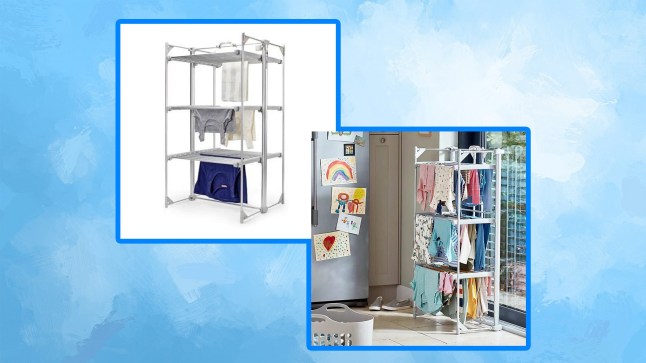

Metro journalists select and curate the products that feature on our site. If you make a purchase via links on this page we will earn commission – learn more
The temperature is really starting to drop, which means hanging the clothes out to dry in the garden or on the balcony is no longer a practical life choice (inward sobs).
Worse still, those of us without an outdoor space or tumble dryer are left even more stumped as the clothes horse doesn’t cut it anymore, leaving garments damp-smelling and musty.
But fear not: heated airers are a welcome solution to the wet washing problem, quickly and efficiently drying your clothes while saving you money on running the tumble dryer or jacking up the central heating.
And there’s one heated airer that is gaining a lot of popularity for all the right reasons. Introducing the Drysoon Deluxe 3-Tier Heated Clothes Airer.
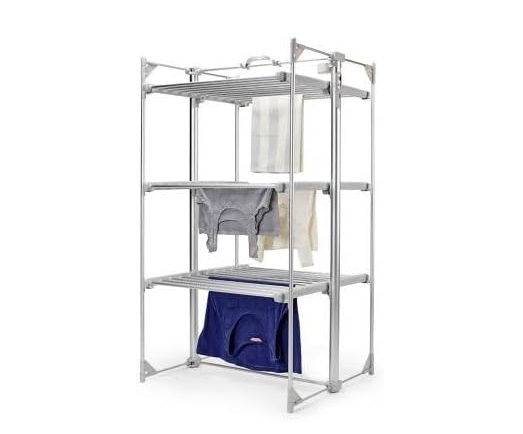
drysoon Deluxe 3-Tier Heated Clothes Airer
Powered by 300W, this heated clothes airer offers a powerful yet compact drying solution. The aluminium frame weighs 7.7kg and boasts three tiers to drape or hang your clothes on. It features a built in timer that can be set to run for 12 hours, as well as adjustable programmes to suit your needs.
The Drysoon Heated Clothes Airer ticks a lot of boxes: it’s foldable, can hold up to 15kg of laundry (around three washes), it dries your clothes quickly, is gentle on your delicates and is super affordable to run.
When unfolded this dryer offers up a whopping 21m of drying space, but when folded away it is just 9cm, so it can be stored away neatly when not in use.
Yes, 21 metres of drying space sounds like a lot, but don’t panic – this doesn’t correlate to a 21m footprint. The airer measures 70cm in depth, 74cm in width and 132.5cm in height, and the tower features numerous shelves to drape or hang your clothes over.
Whether its your underwear, towels, jeans or dresses, this heated airer ensures every piece of washing gets ample drying space.
The airer can hold up to 15kg of laundry, too, while the aluminium frame weighs just 7.7kg, a sturdy design that won’t topple over like some we have tested in the past.
The heated airer has adjustable settings, as well as a timer to monitor drying times and ensure it only runs for as long as you need it to.
This frame can dry even the most delicate fabrics gently, so you don’t have to worry about ruining your silk dresses or PJs that would usually be unsuitable for a tumble dryer.
The best part is it promises to be a more cost-effective solution than tumble dryers or a visit to your local laundrette, as it costs just pennies to run.
Shoppers recommend buying the cover for £34.99 to speed up drying time – and conceal your undies from visitors.
With over 1,400 glowing reviews, it’s safe to say this Drysoon Heated Airer is a laundry day essential.
One happy customer commented: ‘The best investment this year and I’d highly recommend it. Get the cover because it’s great quality and helps the drying time.’
Another impressed reviewer added: ‘I love this airer. It is exactly as described and fits a lot on it (large capacity) while being sturdy.
‘While being expensive, I do really recommend the cover as well as this massively expedited the drying quality. Easy to use and solid.’
‘I love this,’ raved a third. ‘Very easy to assemble and you can get a lot of washing on it. Heats up great and you can set the timer for a long or short time.
‘Washing dried great and it’s easy to move around. I also bought the cover which is also handy to keep the heat in and cover when not in use. The airer is easy to store and quite compact when folded down.’
That’s your winter washing sorted.
Follow Metro across our social channels, on Facebook, Twitter and Instagram
Share your views in the comments below
18 Nov, 2025 | Admin | No Comments
Queen Rania just wore the ‘sleek’ bridal version of Princess Kate’s 4-inch heels

Queen Rania of Jordan just wore the ‘sleek’ bridal version of Princess Kate’s 4-inch heels for an event on Monday, 17 November.
18 Nov, 2025 | Admin | No Comments
Amal Clooney just schooled us on how to wear a ‘naked’ skirt in a professional setting

Human rights barrister Amal Clooney put the classiest twist on the viral ‘naked’ dress trend with a figure-skimming skirt as she joined her actor husband, George Clooney, in meeting Philippine President Ferdinand Marcos Jr. and First Lady Liza Araneta Marcos at Malacañang Palace.

